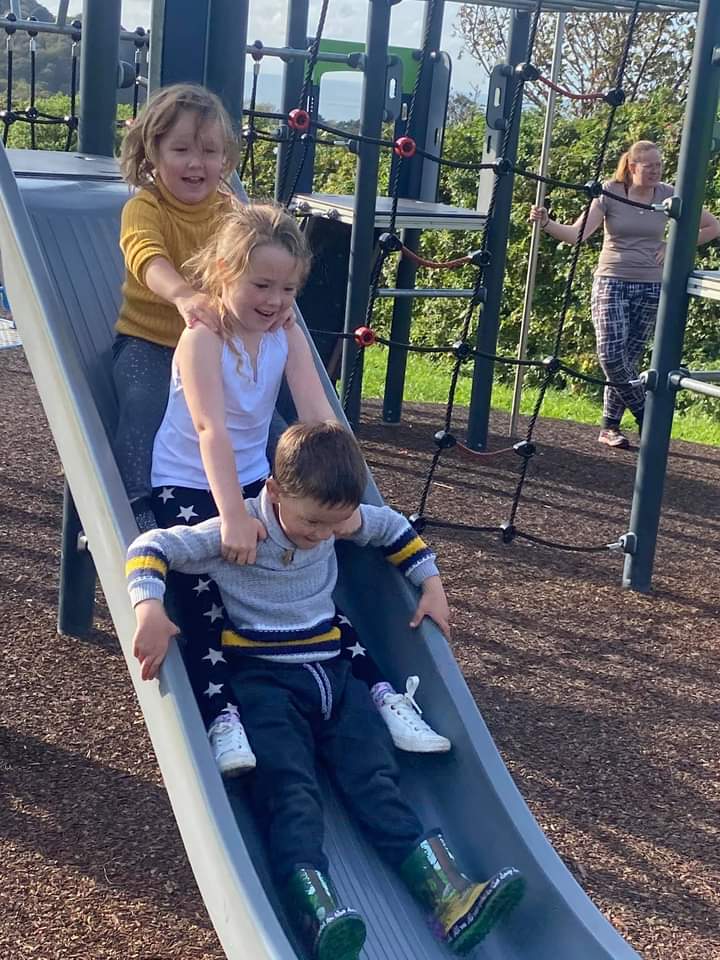I saw a question on social media asking how to teach positional language ( over, under, beside, above etc.) to early years children.
My ideas are:-
To read books to the children; such as We’re going on a bear hunt by Helen Oxenbury.
.

Or the Usborne books which feature a little yellow duck to find on the pages. Discuss what is happening in the stories with the children.
.

Play hide and seek and talk about where the children hid after they are found, for example, BEHIND the sofa, UNDER the table, you could also play this by hiding a toy for the children to find.

Make an obstacle course; indoors or out and again make conversation about what the children are dong.
When visiting the park ask the children where they are when they have gone UP the ladder to the slide and slide DOWN again or ABOVE you on the climbing frame.

At snack or lunch time ask the children who is sat BESIDE them.
Make a den by putting a blanket over a table and tell the children to play UNDER it.

Explaining positional language to young children is quite simple.
Please share any other ideas with me.
As always questions and comments are welcome.
Until next time.
Karen
x
Linked with



Discover more from The Next Best Thing To Mummy
Subscribe to get the latest posts sent to your email.
Love this. These ideas are simply, easy, fun and perfect to use with our preschooler!
Thanks for your kind words, Jed
These are really good ideas. I’m going to try them on my three year olds. #KCACOLS
Thanks Helen, enjoy your 3 year olds as before you know it they will be grown up
Brilliant ideas as usual Karen, you have a wonderful imagination. I enjoyed reading them very much.
Thank you, Pearl, I do my best
Great ideas! And what fun! #ParentPower
Thanks, Lydia
What a fun way to learn!
It is, thanks for sharing your thoughts, Michele
Treasure hunts are a good way to teach it. Getting them to look under, over, inside, on top of, behind, for little things to find. We do these at our toddler group. Lots of fun!
Thanks for sharing with #parentpower
I hadn’t thought of treasure hunting, but you are right lots of opportunities for positional language, thanks for sharing, Karen
Great idea. It’s just so important to converse with your children. Vocabulary is the cornerstone of all learning. Those children that get little interaction really suffer interms of the ability when they attend school. #KCACOLS thanks for joining us
Thanks for sharing your thoughts, Rachel
Ooh these are great ideas. I’ll be honest I have never specifically taught positional language to my 3 but know of a few children in my class that could do with extra support so I will borrow these ideas. Thanks for linking up with #parentpower
Glad to be of help, Laur
Great ideas! I think labelling what you do during play or other everyday actions is often the best way to incorporate this kind of learning naturally. For children who are very visual learners, I think books and apps that clearly show the different positions can also be helpful x #KCACOLS
Thanks for sharing your thoughts and experiences, Malin
Thank you for sharing this with us. Really simple ideas. I love the sound of an obstacle course. Kids will absolutely love that. #ParentPower
My pleasure, thanks for your comment
This was great, thank you for sharing all your insights! #KidsAndKreativity
Thanks, I do my best
Popping back from #KidsAndKreativity
We’re going on a bear hunt is a great book – I’d not really thought about it as helping to teach positional language but it is a great way of doing so. #KidsandKreativity
Yes, it is a great book for teaching positions langage, thanks for sharing your thoughts, Louise
Some great and fun ways for teaching positional language, kids always learn better when they think they are just playing. Thanks again for sharing at #KidsandKreativity.
Thanks ,Kerry for sharing your thoughts